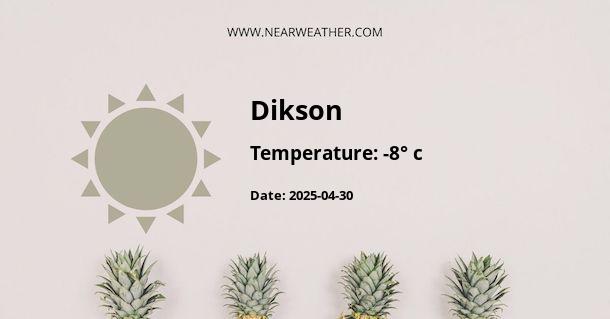Dikson, Russia: Climate and Weather Year Round
Dikson is a small town located on the coast of the Kara Sea in the Taymyr Peninsula of Russia. With its remote location and harsh Arctic climate, Dikson experiences extreme weather conditions throughout the year. In this article, we will explore the climate and weather patterns of Dikson, providing detailed information about its temperatures, precipitation, and other important meteorological factors.
Temperature
Dikson experiences an extremely cold climate due to its high latitude and proximity to the Arctic Ocean. The average annual temperature in Dikson is around -12.2°C (10°F). The winter months, from November to March, are particularly cold, with average temperatures ranging from -26.1°C (-15°F) to -17.8°C (0°F). January is the coldest month, with an average temperature of around -30.6°C (-23°F).
The summer months, from June to August, offer some relief from the cold, but temperatures still remain quite chilly. Average temperatures during this period range from 1.7°C (35°F) to 7.2°C (45°F). July is the warmest month, with an average temperature of around 5.6°C (42°F).
It is important to note that the temperatures mentioned above represent the long-term averages, and fluctuations can occur from year to year. Additionally, wind chill can significantly lower the perceived temperature, making it feel even colder than it actually is.
Precipitation
Dikson receives a relatively low amount of precipitation throughout the year, with the majority falling as snow due to the cold temperatures. The average annual precipitation in Dikson is around 200 millimeters (7.9 inches). The wettest months are July and August, when Dikson receives an average of 30-40 millimeters (1.2-1.6 inches) of precipitation.
However, it is worth mentioning that Dikson is often subject to strong winds and blizzards, which can lead to blowing snow and reduced visibility. These weather conditions can make travel and outdoor activities challenging and dangerous.
Sunlight
Due to its high latitude, Dikson experiences significant variations in daylight throughout the year. In the winter months, the sun remains below the horizon for several weeks, resulting in polar night. Conversely, during the summer months, Dikson experiences the phenomenon of the midnight sun, with 24-hour daylight. This unique feature of the Arctic Circle adds to the allure and mystique of the region.
Extreme Weather Events
Dikson is no stranger to extreme weather events, which are common in the Arctic region. Blizzards, strong winds, and heavy snowfall can occur throughout the year, making it essential for residents and visitors to be well-prepared and equipped for such conditions.
In addition to these regular weather patterns, Dikson is also affected by the changing climate, experiencing the impact of global warming. As the Arctic ice melts and sea temperatures rise, Dikson is vulnerable to coastal erosion and other environmental challenges.
Conclusion
Dikson's climate is characterized by extremely cold temperatures, low precipitation, and significant variations in daylight throughout the year. Its remote location and harsh Arctic environment make it a challenging place to live or visit. However, Dikson's unique climate and stunning natural beauty continue to attract adventurers and researchers alike, seeking to explore and understand this remote corner of the world.
A - Dikson's Latitude is 73.506943 & Longitude is 80.546387.
A - Weather in Dikson is -8° today.
A - Climate Conditions in Dikson shows overcast clouds today.
A - Humidity in Dikson is 96% today.
A - Wind speed in Dikson is 11.52 km/h, flowing at 260° wind direction. today.
